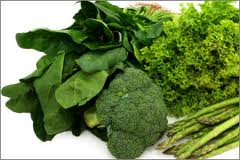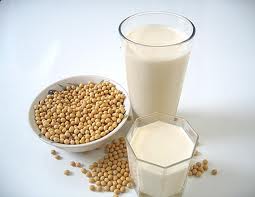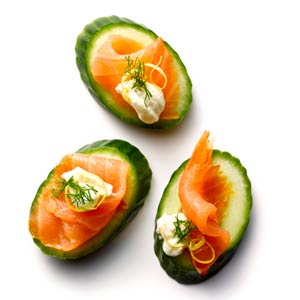
When children and adults have dairy allergies or a dairy intolerance, finding dairy substitutes may be a little challenging. Most people know that dairy is good for the body because it provides generous sources of calcium. Because calcium is the most abundant mineral in the human body (ninety-nine percent of the body's calcium is stored in bones and teeth for structural support) it can be easily leeched out of the bones due to the amount of acidic foods we may consume. What most people do not realize is that there are several dozen sources of common foods outside of dairy that provide the human body with the recommended intake of 500 mg per day or about 2 traditional servings of milk (1-3 years old), 800 mg per day of about 3 traditional servings (4-8 years old), and 1,000 mg a day (for adults), (National Institutes of Health (NIH)). If you or your children do not like drinking milk, or get stomach aches when drinking a tall glass with those cookies, know that there are many other ways to receive calcium (so do not fret). It is always best to get the calcium you need from foods before turning to supplements. Outside of diary choices for calcium, the following 10 foods are the next best for that convenient daily dose.
Contains more calcium than any other nut, and they are also good sources of fiber, folic acid, magnesium, potassium, and protein. Don't forget almond milk as a great alternative to milk in your cereal, as an accompaniment to your dessert, in your coffee and for your cooking needs.
Almonds are very versatile for both savory and sweet dishes. Try almond meal, a finely ground almond powder, in baking recipes, such as doughs, cookies, bread, or sprinkled over oatmeal or cereal in the morning.

Many people do not know this, but broccoli has is packed with calcium as well as iron, magnesium, potassium and vitamins C and E, this cruciferous vegetable is one nutritional superfood!
Cooking with broccoli is easy, as it is flavorful raw, lightly steamed, boiled or baked, and can be enjoyed on its own or in a variety of dishes. Try drizzling olive oil and sprinkling Parmesan cheese onto lightly steamed broccoli.

To make up for the calcium found in dairy products, many imitation dairy products are enriched with calcium and other minerals. The calcium in soy milk, rice milk, almond milk (mentioned earlier), hemp milk or flaxseed milk, all of which is equivalent to that of milk. There are enriched varieties available in most brands, including Edensoy, Rice Dream, Silk, Westwood, and Wildwood, just to name a few.
Cooking and baking with soy milk, rice milk and other imitation dairy products is easy; use "milks" in sauces, baked goods, over cereal and in your morning cup of coffee.
Figs are an excellent source of calcium, supplying the exact same amount of calcium found in a glass of milk in just 10 figs. They are also high in iron, magnesium, potassium, and phosphorous.
Figs can be enjoyed either fresh or dried as purees in baked goods to add density, texture and flavor in place of unhealthy fats, and they are also delicious prepared in sweet and sour dishes and as compliments to lamb, pork, poultry and game bird dishes.

These are excellent sources of calcium, including varieties like kale, mustard greens and spinach. In fact, kale contains more calcium per ounce than milk! Spinach has high amounts of oxalic acid which can inhibit the body's ability to assimilate the calcium, so it should not be eaten as a main calcium source all of the time. To increase the body's ability to absorb the many nutrients found in spinach, adding foods high in vitamin C helps to cancel out the effect of oxalic acid.
Dark leafy greens have the highest nutrient content raw or lightly steamed, and rarely should they be cooked longer.

Soybeans are high in calcium as well as iron, protein and healthy fats. They are low in cholesterol and saturated fats and are sold dried, canned and frozen as well as in curd form(tofu) and fermented (tempeh).
Soybeans can be used in recipes in their whole-form, edamame, as well as pureed for dips, sauces and spreads. Additionally, tofu and tempeh can be used in sweet and savory dishes alike; in its silken form, tofu is great for "custards" or sauces, and both tempeh and tofu in firmer varieties can be chopped into blocks and baked, sauteed, fried or served on sandwiches.

Sardines already score points for having low levels of contaminants and high levels of omega-3 fatty acids, but these super little fish also give you 325 mg of calcium per 3 ounces. That is more calcium than a glass of milk!

Plain, nonfat yogurt is the top source of calcium. Eight ounces provide 452 mg of calcium and 127 calories. Low-fat plain yogurt (415 mg of calcium and 143 calories) and fruit yogurt (345 mg of calcium and 232 calories) are not far behind. (If you are allergic to dairy, reframe from eating dairy based yogurt. People who have intolerances can slowly build their tolerance, a little at a time. Introduce no-added sugar and live cultured yogurts into the diet and eat by itself, not with fruit or other carbohydrates, such as granola or sweeteners).
Try yogurt and granola together in a delicious parfait, or add some yogurt on top of fresh berries.

Pink salmon offers 181 mg of calcium per three ounces, but make sure you eat the salmon prepared with the bones. While boneless salmon has some calcium, eating salmon with bones is an excellent, not to mention tasty, way to enjoy this fish. Salmon is also high in healthy Omega-3 fats and protein.
Using salmon in cooking is easy; canned salmon with the bones can be used to make patties that can be enjoyed on their own or as "burgers," and it can also be used in place of tuna in recipes like tuna salad or tuna casserole.
For the most sustainable salmon option, opt for wild salmon when possible. Choose wild Alaskan salmon, which is both free of contaminants and fished sustainably (Environmental Defense Fund's Seafood Selector).
Blackstrap molasses is the darkest grade syrup that remains after refining sugar, which is done by boiling sugar into cane juice and then spinning the cane juice in a centrifuge. As the centrifuge cycles, the molasses becomes darker in color. The darkest and thickest variety, blackstrap molasses also contains the most minerals, such as calcium, iron and potassium, which are extracted from refined sugar in the refining process.
Blackstrap molasses is less sweet than other sweeteners and has a "bite" in its flavor, making it excellent for sauces and marinades as well as spiced baked goods.
Resources: webmd, everydayhealth.com, livestrong.com, sparkpeople.com, spine-health.com
